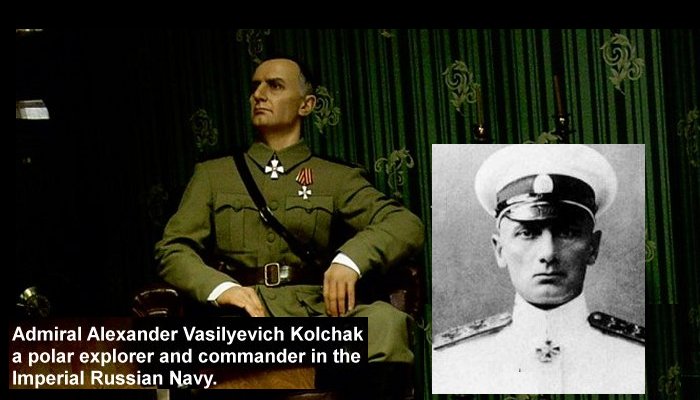AncientPages.com - In the early morning of February 7, 1920, in Irkutsk, Siberia, the Bolsheviks executed Aleksandr Kolchak, one of the leaders of the White Movement and the so-called Supreme Ruler of Russia.
Before the October Revolution in 1917, Kolchak served in the Navy. In 1900–1903, he participated in a Polar expedition headed by Eduard Toll.
The expedition scoured the Arctic Ocean for the mysterious Sannikov Land, once seen from a distance by the merchant Yakov Sannikov.
When Kolchak returned, the Russian Geographic Society decorated him with the medal "for an incredible and important geographic deed."
At the beginning of the First World War, Kolchak conducted several successful military operations against the German fleet in the Baltic Sea, and in 1916 earned the rank of Admiral and became the commander of the Black Sea Fleet.
In February 1917, the bourgeois-democratic revolution happened. Kolchak embraced the process and hoped it would help Russia to win World War I. He was disappointed.
"The way of revolution leads us to destruction. We should pay for it with our lands and our natural riches. Our country should lose the political independence and the outlying districts and become so-called Moscovia," he wrote.
When In June 1917, the council of Sevastopol decided to disarm all the officers who were suspected of counterrevolutionary activities. The order applied not only to real weapons but also to Kolchak's golden saber. When the representatives of the Soviets came to Kolchak for it, he threw the saber overboard: "If the newspapers do not want me to have this weapon, let it sink." On June 7, he resigned from the Navy.
Divers found the saber three weeks later and returned it to Kolchak with a new inscription: "To the knight of honor, Admiral Kolchak, from the Union of the Army and Fleet Officers."
In August 1917, Kolchak headed a delegation to the US. He learned about the October Revolution on his way back to Russia in Yokohama, Japan. In 1918, he returned to Russia and joined the Volunteer Army in Siberia to fight the Bolsheviks. On October 13, 1918, Kolchak came to Omsk, Siberia, where the united anti-Bolsheviks government was based and became the military minister. On November 18, 1918, Kolchak staged an army coup d'état and established an anti-Bolshevik government in Siberia with headquarters at Omsk.
After the coup, Kolchak was now the ruler of Russia; at least, that's how the White Army and their friends saw it. But it went downhill with the White Army, which suffered a series of losses. The Red Army took Omsk on November 14, 1919. Kolchak moved his headquarters to Irkutsk.
In late December, Irkutsk fell under the control of a leftist group and formed the Political Center that decided to dismiss Kolchak. When he heard of this on January 4, 1920, he announced his resignation, but it was considered a particularly ill-considered move. On January 20, the government in Irkutsk surrendered power to a Bolshevik military committee, which focused its attention on Kolchak. He was interrogated for nine days between January 21 and February 6. Despite the arrival of a contrary order from Moscow, Admiral Kolchak was condemned to death along with his Prime Minister, Viktor Pepelyayev.
Both prisoners were brought before a firing squad in the early morning of February 7, 1920. According to eyewitnesses, Kolchak was calm and unafraid, "like an Englishman." The Admiral asked the commander of the firing squad,
"Would you be so good as to get a message sent to my wife in Paris to say that I bless my son?"
"I'll see what can be done if I don't forget about it," the commander responded.
A priest of the Russian Orthodox Church then gave the last rites to both men. The squad fired, and both men fell. The bodies were kicked and prodded down an escarpment and dumped under the ice of the frozen Angara River.
AncientPages.com
Expand for referencessource:







